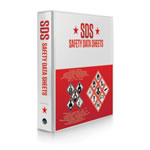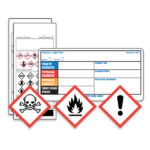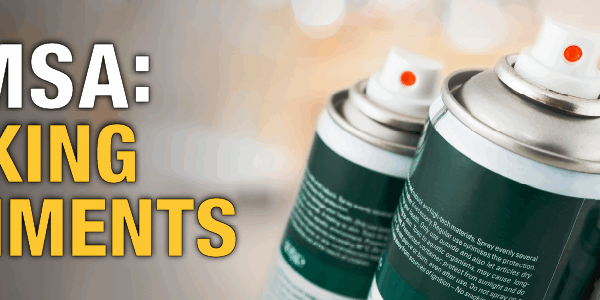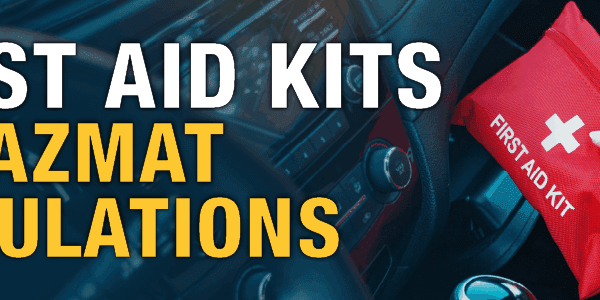This post was originally published in June 2017 and has been updated in February 2022 for accuracy.
Do My Products Need a SDS?
Determining which of your consumer chemical products would require a GHS Safety Data Sheet (SDS), can sometimes be difficult and confusing. Which products actually do need to have compliant SDS, can differ depending on which country/region you are in, and how the product is being used.
Canada
In Canada, chemical products that are labeled, packaged, and sold at retail outlets as consumer products, are regulated by the Canadian Consumer Product Safety Act (CCPSA), and the Consumer Chemicals and Containers Regulations 2001 (CCCR 2001). Examples of ‘retail’ outlets are stores such as Canadian Tire, Home Depot, Rona, and corner gas stations that anyone off the street can walk into and buy chemical products in, etc.
Chemical products, which are intended for use in worksites and not sold at retail outlets, on the other hand, are regulated by the Hazardous Products Act (HPA) and Hazardous Products Regulations (HPR, or “WHMIS 2015“). It is the HPA and HPR (WHMIS 2015), where GHS SDS requirements are found, while the CCPSA and CCCR 2001 do not currently contain any SDS requirements at all.
In the HPA, in Part II, Section 12(j) and Schedule 1, CCPSA consumer products are actually excluded from the application of the HPA’s requirements.
What does this exclusion mean?
Keep in mind that the CCPSA and CCCR 2001 do not contain any SDS requirements, while the HPA and HPR (WHMIS 2015) do. As a result of the exclusion in the HPA, the HPA and HPR do not apply to consumer chemical products in Canada. As such, these consumer chemical products do not require SDSs (since SDS requirements are in the HPA and HPR), provided the products are labeled, packaged and sold at retail outlets in accordance with the CCPSA and CCCR 2001.
Legally, the proportion of sales in each of the respective sales markets (consumer vs. workplace), is not relevant. Sales to worksites (e.g. direct to contractors) could be, for example, 90% of the product’s total sales, while sales to retail outlets could constitute only 10% of the product’s total sales. As long as the product is in the same container size in both markets, and the product is labeled/packaged according to consumer rules, and it is available for sale in retail outlets, then the HPR (WHMIS 2015) does not apply. This means GHS SDS are not required, even when the majority of sales are to worksites. Providing GHS SDS is totally optional for a supplier in this case. It’s completely up to the business relationships a company may have with their own customers, on deciding whether or not to provide GHS SDS.
Key points for this exclusion from SDS requirements, however, is whether or not the product container is actually ‘sold at retail outlets’, and the sizes of containers. Consider a company selling one product in two container sizes (for example a 1 quart / 946 mL size and a 5 gallon / 18.9 L size). The 1 quart / 946 mL size is sold in retail outlets such as Home Depot, as well as direct to worksites. The 5 gallon / 18.9 L size, is ONLY being sold direct to worksites and contractors with special licenses, for example. In this case, the customer would require a GHS SDS to accompany the 5 gallon / 18.9 L size, since this container size is NOT sold at retail outlets.
The United States
There is a similar exclusion in the US from the Occupational Safety & Health Administration’s (OSHA) GHS requirements for consumer products, however, there is a difference in how the consumer product is treated, depending on what the frequency or manner of use of the product is.
Chemical products, which are intended for use in worksites and which are not sold at retail outlets, are regulated by OSHA in the 29CFR 1910.1200 standard for hazard communication (Hazcom 2012). The OSHA Hazcom 2012 standard states that
This section does not apply to:
(ix) Any consumer product … where the employer can show that it is used in the workplace for the purpose intended by the chemical manufacturer or importer of the product, and the use results in a duration and frequency of exposure which is not greater than the range of exposures that could reasonably be experienced by consumers when used for the purpose intended [29 CFR 1910.1200(b)(6)(ix)].
OSHA goes onto provide an example, in the frequently asked questions (FAQs) section of their website, which involves Windex. Windex is commonly used by both retail customers in their homes, as well as, for example, by Janitors who use the products in their workplaces only. If the janitor uses the Windex in exactly the same way the retail customer would at home, and no more frequently than that retail customer would, then there are no OSHA Hazcom 2012 GHS requirements for the product, and a GHS SDS is not required.
But, if that Janitor uses the Windex 5 or 6 days a week for hours at a time each day, this usage is significantly more frequent than how a user at home would use the product. In this case, there would be OSHA Hazcom 2012 requirements and a GHS SDS would be required.
The European Union (EU)
In the EU, REACH [Regulation (EC) No. 1907/2006 concerning the Registration, Evaluation, Authorisation and Restriction of Chemicals] requires suppliers to provide SDS for certain substances and mixtures. It also states in Title IV, Article 31, Section 4, that:
The safety data sheet need not be supplied where hazardous substances or mixtures offered or sold to the general public are provided with sufficient information to enable users to take the necessary measures as regards the protection of human health, safety and the environment, unless requested by a downstream user or distributor.
The difference here for consumer products (ie., sold to the general public), is that at any time, a downstream user or distributor may request an SDS for a consumer product … and it must be supplied to them. Initially, a supplier could just provide other means of giving sufficient information on the products’ hazards and safe use (e.g. instruction booklets, labels, technical data sheets). But at any time, if requested, an SDS would have to be provided.
For further information
For further information on European and North American regulations, please consult the following website links:
Europe:
https://echa.europa.eu/safety-data-sheets
United States:
https://www.osha.gov/dsg/hazcom/index.html
Canada, for workplace products:
http://www.hc-sc.gc.ca/ewh-semt/occup-travail/whmis-simdut/index-eng.php
Canada, for consumer product:
http://www.hc-sc.gc.ca/cps-spc/index-eng.php
If you have any questions regarding GHS or consumer product requirements, please contact ICC Compliance Center, Inc. at 1.888.442.9628 (USA) or 1.888.977.4834 (Canada).
Stay up to date and sign up for our newsletter!
We have all the products, services and training you need to ensure your staff is properly trained and informed.
 Safety Data Sheet (SDS) Services |
 GHS/OSHA/WHMIS Labels |
 OSHA / WHMIS / GHS Training Courses |
This post was originally written by Toni-Ann McLean.







 ICC USA
ICC USA ICC Canada
ICC Canada
Great article, please note that in EU consumers who use chemicals are not downstream users, they do not fall into that category by definition.
https://echa.europa.eu/regulations/reach/downstream-users/about-downstream-users/who-is-a-downstream-user
Thank you for your comment, Chris!
We will add a link in the article to the description of a “downstream user”.
We appreciate your feedback.